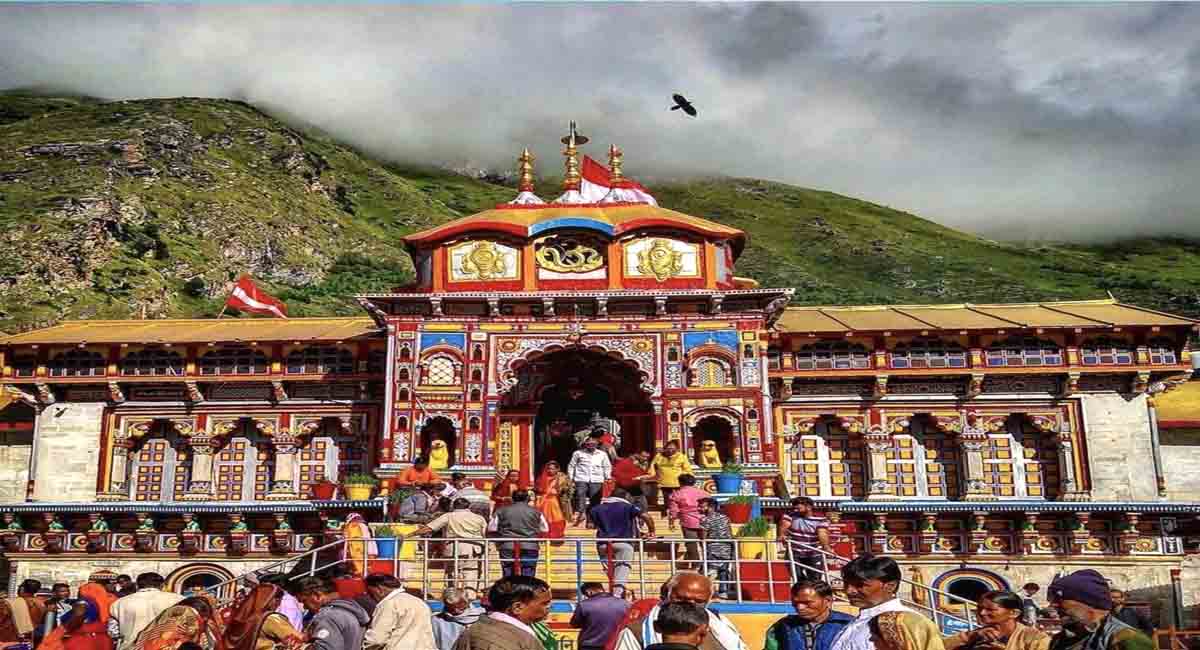The Badrinath Temple is a sacred Hindu mandir located in the Chamoli district of Uttarakhand, India. The temple is one of the four Char Dham pilgrimage sites and is dedicated to Lord Vishnu, who is worshipped here as Lord Badrinarayan. The Badrinath Mandir is surrounded by the snow peaks of the Himalayas and is situated on the banks of the Alaknanda River. We will explore the history, significance, timings, temperature, and weather of the Badrinath Temple.
Badrinath Temple
The Badrinath Temple is also known as the Badrinarayan Mandir. The Badrinath Temple is located in the district of Badrinath, Uttarakhand. It is one of the Char Dhams, which are the four holy pilgrimage sites of Uttarakhand. The other three pilgrimage destinations are Yamunotri, Gangotri, and Kedarnath. These four holy sites are collectively known as Char Dham, and are the most significant religious travel destinations in Northern India, attracting millions of pilgrims every year.
The Badrinath Temple is situated at an altitude of around 3,100 meters in the Garhwal Himalayas, on the banks of the serene and holy Alaknanda river. This sacred town is located between the Nar and Narayana mountain ranges, offering breathtaking views of the majestic peaks. The temple is believed to have been established by the great Indian philosopher and theologian, Adi Shankaracharya, in the 8th century. The temple’s presiding deity is Lord Vishnu, who is worshipped as Badrinarayan.
The temple is open for visitors for six months a year, and during the winter season, it becomes inaccessible due to heavy snowfall. The Badrinath Temple holds immense spiritual significance for the Hindus, who believe that visiting the temple helps one attain Moksha or salvation, which is the ultimate goal of human life according to Hinduism. The serene and spiritual ambiance of the temple, combined with the breathtaking natural beauty of the region, make Badrinath a must-visit destination for all spiritual seekers and nature lovers.
History of Badrinath Temple
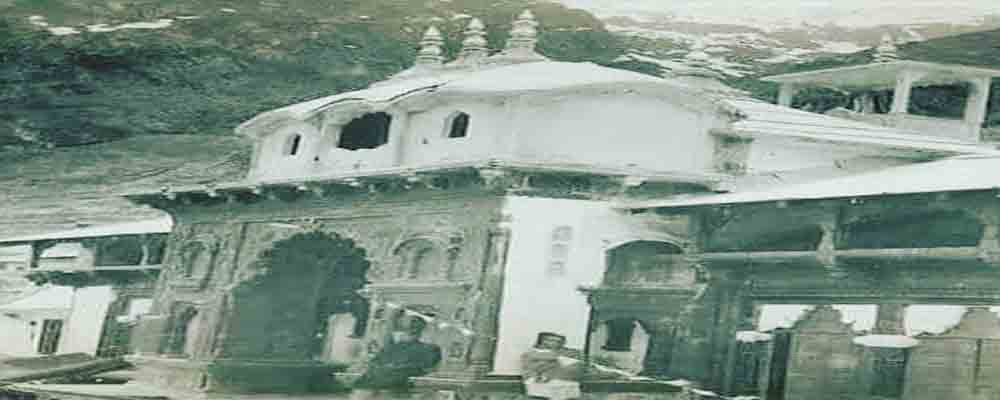
The history of the Badrinath Temple dates back to the 8th century when it is believed to have been established by Adi Shankaracharya, the great Indian philosopher and theologian. According to legends, the temple was built at the site where Lord Vishnu had meditated for ages under the shade of the Badri tree to seek salvation from the curse of sage Narada.
Over the years, the temple has undergone numerous renovations and restorations, with the current structure being built by the kings of Garhwal in the 17th century. The temple’s architecture reflects a blend of both the North Indian and South Indian styles, with the gabled roof and wooden façade being typical of the Garhwal style, and the pyramidal tower being a feature of the South Indian style.
The temple has played an important role in spreading the teachings of Hinduism and has served as a center of learning for centuries. It has attracted many prominent saints and scholars who have contributed to the temple’s rich cultural and spiritual heritage.
Despite being situated in a remote region, the Badrinath Temple has attracted millions of devotees over the years, who have braved difficult terrain and harsh weather conditions to seek the blessings of Lord Vishnu. Today, the temple is not only a place of worship but also a significant tourist destination, attracting people from all over the world who come to marvel at its rich history and breathtaking natural beauty.
Significance of Badrinath Temple
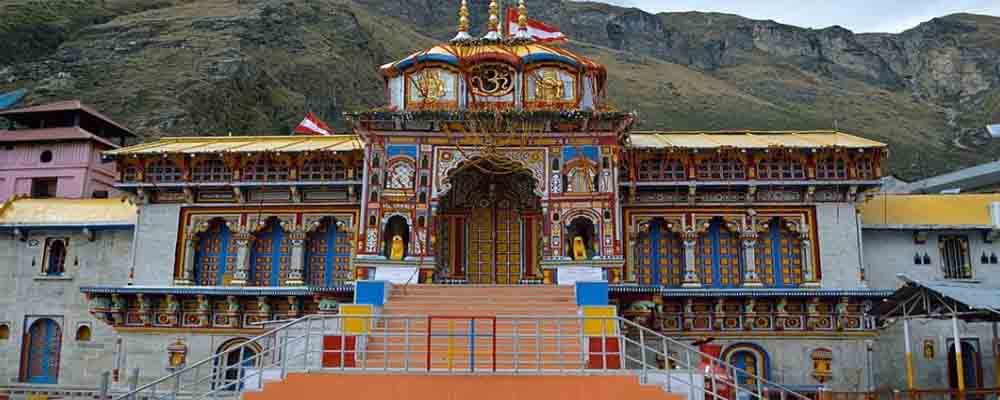
The Badrinath Temple holds immense religious and cultural significance in Hinduism. It is one of the Char Dhams, or four holy abodes, which are believed to have been established by Adi Shankaracharya in the 8th century. The other three dhams are Yamunotri, Gangotri, and Kedarnath, all located in the Himalayas of Uttarakhand.
For millions of devotees, visiting Badrinath Temple is considered a sacred pilgrimage that is believed to grant blessings and liberation from the cycle of birth and death. It is said that taking a dip in the natural hot water springs, called Tapt Kund, before entering the temple cleanses one’s soul of all impurities and sins.
The temple is dedicated to Lord Vishnu, who is worshipped as Badrinarayan and is considered one of the 108 Divya Desams, or holy abodes of Lord Vishnu. The presiding deity is depicted in a meditative pose with his consort, Goddess Lakshmi, by his side. The temple also houses idols of other deities, including Lord Shiva, Goddess Parvati, and Lord Ganesha.
Apart from its religious significance, the Badrinath Temple is also known for its stunning natural beauty and scenic location. It is situated on the banks of the Alaknanda River, surrounded by the majestic Nar and Narayana mountain ranges. The temple’s architecture, with its intricate carvings and ornate decorations, is also a marvel to behold.
Overall, the Badrinath Temple is not just a place of worship but also a symbol of India’s rich cultural heritage and spiritual traditions. It continues to inspire and attract devotees and visitors from all over the world with its profound spiritual energy and serene natural beauty.
Also read – Ayodhya | Ram Mandir | History & Facts | Best Time to Visit |
Badrinath Temple Timings
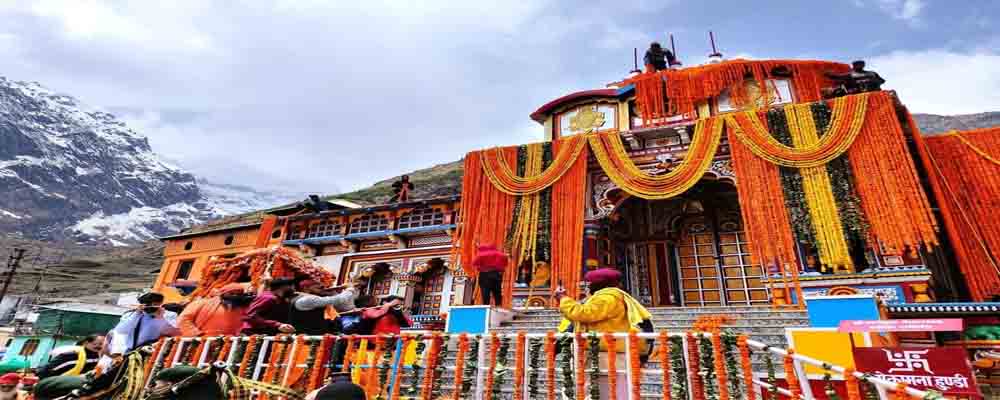
The timings of the Badrinath Temple are subject to change depending on the season. The temple is open for six months from the end of April to the beginning of November. Devotees can visit the temple from 4:30 am to 9:00 pm during this period.
If you’re planning to visit the temple, the ideal time would be during the summer months of May, June, and July when the weather is pleasant and the surrounding natural beauty is at its best. You can also visit during August and September, but the weather can be unpredictable with a higher probability of rainfall.
It’s crucial to note that the temple remains closed during the winter months (from November to April) due to heavy snowfall and harsh weather conditions in the region. The idol of Lord Badrinarayan is shifted to the nearby Yogadhyan Badri temple, where it is worshipped during the winter season.
Before planning your visit, it’s advisable to check the temple timings and be mindful of local customs and guidelines to ensure a safe and respectful visit.
Badrinath Temperature
Badrinath’s location in the Himalayan region has a significant impact on its temperature, which can vary greatly throughout the year. From April to June, which is considered the summer season, the temperature typically ranges from 10°C to 18°C. This time of the year is perfect for a visit to Badrinath as the weather is pleasant and the surrounding Himalayan beauty is at its peak.
However, during the winter months, which are from November to March, the temperature significantly drops, and it can even fall below freezing. This period of the year is marked by heavy snowfall and extreme weather conditions, making it impossible to visit the temple. During this time, the temple is closed, and the idol of Lord Badrinarayan is moved to Yogadhyan Badri, a nearby temple. It’s essential to note that this is an inaccessible period to visit the temple.
Badrinath Weather

The weather conditions in Badrinath are primarily influenced by its location in the Himalayan region. The town experiences cold weather throughout the year, with significant variations across seasons.
During the summer months, from April to June, the temperature generally ranges between 10°C to 18°C. The weather is pleasant, and the natural beauty of the Himalayan ranges surrounding the town is at its best during this period.
The monsoon season, from July to September, brings heavy rainfall to the region. This period can sometimes lead to landslides and roadblocks, making travel to Badrinath challenging. Visitors need to exercise caution during this season.
The winter season, from November to March, is characterized by harsh weather conditions, and the temperature drops significantly. The region receives heavy snowfall during this period, and the temple remains closed as it becomes inaccessible. The idol of Lord Badrinarayan is shifted to a nearby temple called Yogadhyan Badri during the winter season.
Overall, while the weather conditions in Badrinath can be challenging, each season offers unique experiences for visitors.
Kedarnath to Badrinath Distance
The distance between Kedarnath and Badrinath is around 223 kilometers, and the journey by road takes approximately 10 hours. The route is scenic and offers breathtaking views of the Himalayan mountains and the surrounding landscapes. The journey can be quite challenging due to the winding roads and steep inclines, but it is well worth the effort for the spiritual and cultural experience that awaits at Badrinath. Many pilgrims choose to undertake this journey as part of the Char Dham Yatra, which involves visiting all four of the sacred shrines of Yamunotri, Gangotri, Kedarnath, and Badrinath. It’s important to plan ahead for the journey and to be aware of any travel advisories or weather conditions that may impact the trip.
How to Reach Badrinath Temple

Badrinath Temple, situated in the town of Badrinath in Uttarakhand, India, is a renowned pilgrimage destination for Hindus. To reach this holy place, there are three ways:
By Road: Haridwar is the nearest major city, which is connected to several cities like Delhi, Dehradun, and Rishikesh. From Haridwar, you can hire a taxi or take a bus to reach Badrinath, which usually takes around 10-12 hours. The road leading to Badrinath is narrow and winding, but the journey through the scenic beauty of the Himalayas is an experience in itself.
By Train: The closest railway station to Badrinath is located in Rishikesh, which is around 295 kilometers away. You can hire a taxi or take a bus from Rishikesh to reach Badrinath.
By Air: The nearest airport to Badrinath is Jolly Grant Airport in Dehradun, which is approximately 317 kilometers away. You can hire a taxi or take a bus from the airport to reach Badrinath.
It is essential to note that the road to Badrinath is open only for six months, from May to October, due to heavy snowfall in the region during the winter months. Therefore, it’s always recommended to check the weather conditions and road status before planning a trip to Badrinath.
Accommodation near Badrinath Temple

There are plenty of accommodation options available nearby. From budget hotels to luxury resorts, you can find something that suits your needs. Some of the popular options include the Sarovar Portico Badrinath, the Badri-Kedar Guest House, and the GMVN Tourist Bungalow.
Aside from visiting the temple, there are plenty of other things to do in Badrinath. For example, you can go trekking to nearby attractions like Vasudhara Falls, Mana Village, and Charanpaduka. You can also visit the Tapt Kund, a hot water spring believed to have healing properties.
What to do in Badrinath
There are several other activities and places to explore in Badrinath. One can go trekking to nearby places such as Vasudhara Falls, Mana Village, and Charanpaduka. Visitors can also visit the Tapt Kund, a hot water spring believed to have medicinal properties. There are several local shops and markets where visitors can purchase local handicrafts.
Festivals Celebrated at Badrinath Temple
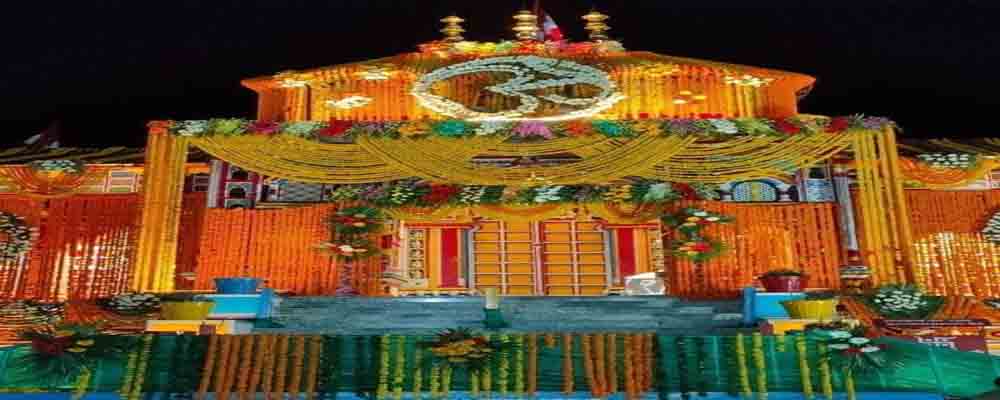
Badrinath Temple, one of the most sacred pilgrimage sites for Hindus, celebrates several festivals throughout the year. The most significant festival is the Badri-Kedar Festival, which takes place in June and draws a large number of devotees. During this festival, the idols of Lord Badrinath and Lord Kedarnath are taken in a procession to their winter abodes, which are located in Joshimath and Ukhimath, respectively.
Apart from the Badri-Kedar Festival, other festivals celebrated at the temple include Makar Sankranti, Basant Panchami, and Diwali. The temple is beautifully decorated during these festivals, and the atmosphere is filled with devotion and religious fervor.
Makar Sankranti is celebrated in January and marks the end of the winter solstice. Basant Panchami is celebrated in February and marks the beginning of the spring season. Diwali is celebrated in October or November and symbolizes the victory of light over darkness.
During these festivals, the temple complex is lit up with colorful lights, and devotees perform special prayers and rituals. The air is filled with the sounds of religious chants and devotional songs. The festivals at Badrinath Temple are not just religious events but also cultural festivals that bring people from different parts of India together.
The Legends of Badrinath
The Badrinath Temple is steeped in mythological legends and stories. According to one legend, Lord Vishnu performed penance at this place and was blessed by Lord Shiva. Another legend states that the Pandavas, the heroes of the Hindu epic Mahabharata, visited this place during their exile.
As per another story, Lord Vishnu was pleased with the penance of Nara and Narayana, two sages who meditated here and appeared before them as Lord Badrinath. It is also believed that Adi Shankara, a renowned Hindu philosopher, found the idol of Lord Badrinarayan in the Alaknanda River and established the temple.
These stories and legends have added to the spiritual significance of the Badrinath Temple, attracting thousands of pilgrims every year.
Myths and Beliefs of Badrinath Temple
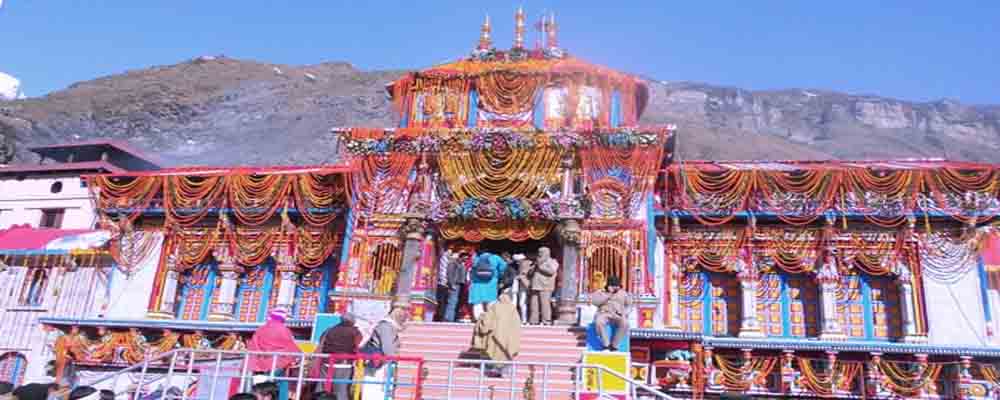
Badrinath Temple is considered one of the most sacred pilgrimage sites for Hindus, and it is believed to be a place where devotees can receive blessings and wash away their sins. One of the most popular beliefs associated with the temple is that it was originally built by Lord Vishwakarma, the divine architect, and later renovated by Adi Shankara. According to Hindu mythology, Lord Vishnu performed penance at this site and was blessed by Lord Shiva, which is why Lord Vishnu is worshipped here in the form of Lord Badrinarayan.
It is also believed that the Pandavas, the heroes of the Hindu epic Mahabharata, visited this place during their exile. It is said that the Pandavas crossed the nearby Mana Pass and came to the Mana Village, which is considered to be the last village of India. It is believed that the Pandavas established a small temple here and worshipped Lord Badrinarayan.
Another popular belief associated with the Badrinath Temple is that a pilgrimage to this temple can wash away all sins and bestow blessings on the devotees. It is also believed that the idol of Lord Badrinarayan was found by Adi Shankara in the Alaknanda River, and he installed it in the temple.
The Badrinath Temple is steeped in rich mythology and beliefs that have been passed down through generations of Hindus, and it continues to be an important place of worship and pilgrimage for devotees.
Rules and Regulations at Badrinath Temple
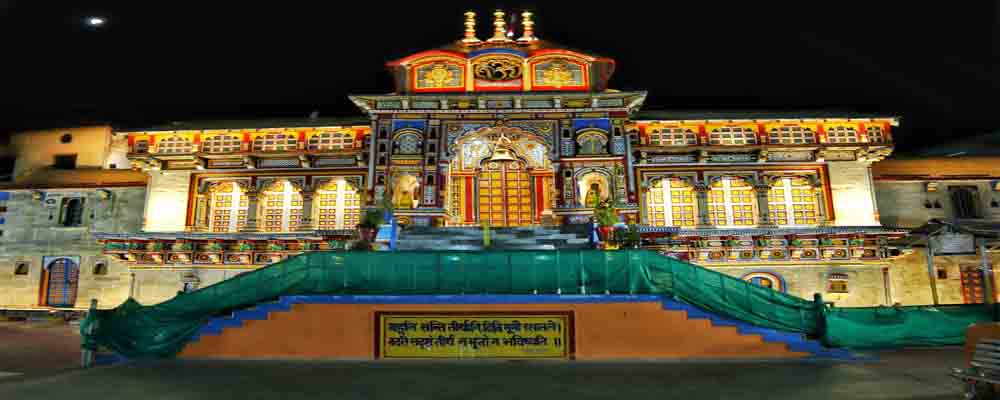
Visitors to the Badrinath Temple are required to follow certain rules and regulations to maintain the sanctity of the temple and ensure the safety of all visitors. One of the most important rules is to dress modestly, with clothes covering the shoulders and legs. Visitors are also required to remove their shoes before entering the temple premises and are not allowed to carry any leather items, electronic devices, or eatables inside the temple.
Additionally, visitors are advised to maintain silence and not to touch the idols or any other objects inside the temple premises. Photography and videography are strictly prohibited inside the temple. Visitors are also requested to cooperate with the temple authorities and security personnel in case of any emergency or security situations.
The temple also provides separate queues for men and women to enter the temple, and visitors are expected to follow the queue discipline. The temple timings are strictly enforced, and visitors are advised to plan their visit accordingly to avoid disappointment.
Following the rules and regulations at the Badrinath Temple ensures a peaceful and safe environment for all visitors and helps in maintaining the spiritual significance of the temple.
Frequently Asked Questions
What is special in Badrinath Temple?
Badrinath Temple is a highly revered Hindu pilgrimage site dedicated to Lord Vishnu, located in the stunning Chamoli district of Uttarakhand. The temple is not only famous for its religious significance but also for its captivating natural beauty. In this article, we will explore the best time to visit Badrinath, why the temple is closed for six months, why it is so famous, and how it compares to other popular pilgrimage sites in the region.
What is the best time to visit Badrinath?
The best time to visit Badrinath Temple is during the months of May to June and September to October. During this time, the weather is pleasant and the temple is open for visitors. The summer season from May to June is especially ideal, as the surrounding area is in full bloom with flowers and lush greenery, making for a truly enchanting experience.
Why is Badrinath Temple Closed for Six Months?
Badrinath Temple is located at a high altitude of 3,133 meters in the Himalayas, and the weather conditions during the winter months are extremely harsh, with heavy snowfall and extreme cold. To ensure the safety of visitors and prevent any damage to the temple, the temple is closed for six months from November to April.
Why is Badrinath Temple So Famous?
Badrinath Temple is considered one of the four sacred places (Char Dham) in Hinduism, along with Kedarnath, Gangotri, and Yamunotri. It is believed to be over a thousand years old and has immense cultural and spiritual significance. The temple’s stunning architecture, intricate carvings, and serene surroundings are a testament to the rich heritage and religious importance of the site. Additionally, the natural hot water spring called Tapt Kund located near the temple is also a popular attraction.
Which is higher Kedarnath or Badrinath?
Badrinath and Kedarnath are both popular pilgrimage sites for Hindus located in the same region of the Himalayas. While Badrinath is located at an altitude of 3,133 meters, Kedarnath is situated at a higher altitude of 3,583 meters. Both temples hold immense cultural and spiritual significance in Hinduism and are visited by millions of pilgrims every year.

